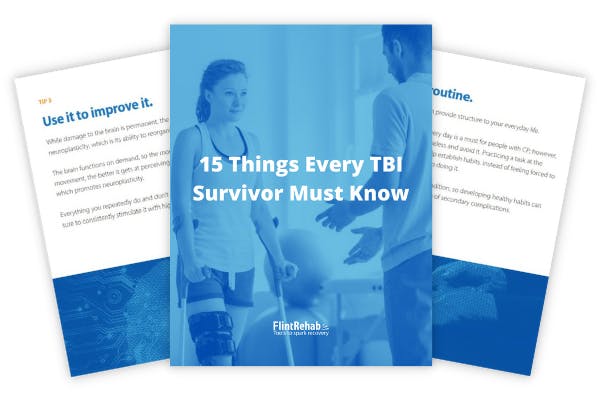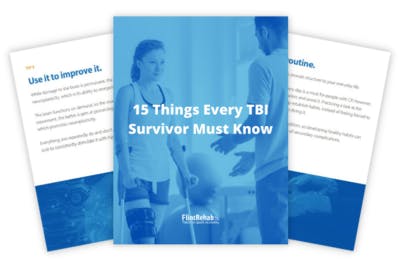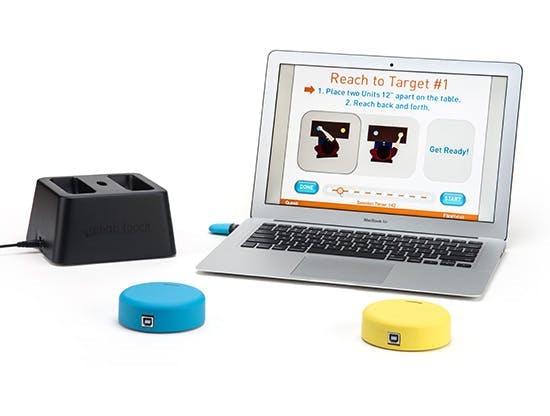No products in the cart.
No products in the cart.
No products in the cart.
No products in the cart.
Home » Neurological Recovery Blog » Traumatic Brain Injury » TBI Side Effects » Disinhibition After Brain Injury: Causes, Treatment, and Management
Last updated on April 18, 2024

Do you find yourself saying or doing things you would normally keep under raps? This loss of control over your emotions and behaviors could be a result of your brain injury. Disinhibition after brain injury is a common behavioral issue that occurs early in recovery.
Today’s article will explain the causes and signs of disinhibition after brain injury, plus how to help the person regain control.
Disinhibition refers to your brains inability to control inappropriate behaviors or impulses. This can result in risky behavior, poor decision-making, and disregard for social subtleties. Unfortunately, disinhibition can lead to many problems, such as injuries and broken relationships.
Areas of the brain involved in regulating behavior include the gyrus rectus and the insula among others, mostly located in the frontal lobe which is the foremost area of the brain protected by your forehead. Damage to these areas is associated with greater disinhibition.
Disinhibition and impulsivity are common for a variety of folks with a brain injury. In fact, disinhibition after brain injury is extreme during the fourth stage of brain injury recovery, which is frequently associated with post-traumatic amnesia. Post-traumatic amnesia occurs immediately after a person emerges from a coma.
During this time, the patient retains no memory of where or even who they are. While in this disoriented state, the person will have almost no inhibition. When post-traumatic amnesia passes, most patients will regain some control of their behavior. But many will still struggle to control their impulses.
Signs of disinhibition after brain injury can range from laughing at inappropriate times to uncontrollable bursts of rage. For example, some people will struggle with aggressive behavior, while others might seem excessively friendly with people they barely know.
Other common symptoms of disinhibition include:
While disinhibition after brain injury can cause serious problems, with the help of counseling, it is possible for a person to regain control of their most harmful behavior.
It is helpful when you struggle with impulsivity to have friends and family who understand your comments or choices may be a side effect of your condition so they do not take them too seriously. Surround yourself with these kinds of folks. Find ways to make it harder for you to act impulsively.
For example, if you have a tendency for impulse shopping, set up ways to make it difficult to shop online by deleting promotional emails or shopping apps, or even stop using a credit card. When words come out and you cannot retract them, just apologize and move on. Explaining to others the reason for your behavior will also help others have empathy for your tendencies.
In addition to this, you can also train your brain to reestablish the inhibition you lack. The best way to regain control of behavior is through practice. This will stimulate new branches of neurons to develop as neuroplasticity transforms your brain to inhibit unwanted behaviors.
As you practice restraining your impulses, your brain will rewire neural connections to develop self control. However, it is challenging to learn to restrain impulses, especially if you don’t even realize your actions are offensive. That’s where behavioral therapy can help.
The following are some of the best types of therapy to help patients regain control of their actions after brain injury:
Applied behavioral analysis is one of the most researched and effective interventions for behavioral problems. It’s also been used successfully with disinhibition after brain injury.
The first principle of ABA involves helping patients learn skills through reinforcement. It primarily teaches behavior through consequences so patients learn which actions are appropriate across various social settings and which are not.
Therapists also show their patients how to avoid unwanted behavior such as emotional outbursts. This therapy is best suited for patients with severe cognitive disabilities or young children.
This therapy helps TBI survivors who don’t have severe cognitive difficulties, but who still struggle to control their behavior. The goal of cognitive-behavioral therapy is to help a person understand their actions and find out what triggers them.
For example, maybe the person tends to dwell on sad emotions, which leads them to get more easily upset. Or maybe it’s something as simple as hunger that triggers anger impulses.
When a person identifies some triggers, the therapist will work with them to discover ways to cope with those triggers and control themselves more so they can relate to their surroundings in a healthy way.
Insight-oriented psychotherapy is like CBT, but instead of focusing on triggers, it addresses harmful beliefs. The beliefs IOP addresses aren’t necessarily conscious, but they shape how you see the world and, as a result, they can affect your behavior. For example, a therapist might help a patient discover that they believe people don’t like them because of their brain injury, which contributes to their hostile impulses towards others.
Once the person discovers these beliefs, the therapist helps them to replace negative thoughts with positive ones. Combining insight therapy with behavioral therapy is often the most effective approach.
Sometimes the person’s behavior is so problematic that they are a danger to themselves and others. While there are currently no drugs that directly address disinhibition, there are many meds that can treat harmful behaviors such as aggression.
Some of these medications include:
These drugs should only be used in extreme circumstances when therapy is not possible. As with all medications, do not give these meds to your loved one without your physician’s permission.
Disinhibition after brain injury can be difficult for family members and loved ones to deal with. Try to remember that the person’s behavior is not their fault. Most likely, they do not really mean what they say or do. All of us have unhealthy or rude impulses that our brains inhibit, often without our knowledge.
Your loved one no longer has that ability, but that does not mean they actually believe the things they say. Think of it as a hiccup or a reflex; it doesn’t signify true meaning.
With enough time and therapy, your loved one should begin to regain control of their impulses. Until then, just stay patient and let them know that whatever happens, you will always be there for them.

If you like our content, you’ll love our ebook and newsletters! Get instant access to our TBI recovery tips ebook with 20 pages of helpful advice by signing up below.
You’ll also receive our emails that share survivor stories and more useful TBI recovery tips, which you can opt out of at any time. (We know you’ll love them, too.)
We will never sell your email address, and we never spam. That we promise.


Time with a speech therapist is extremely valuable during recovery, especially if you struggle with communication, critical thinking, or memory after brain injury. Insurance typically covers speech therapy for a fixed amount of time. But once it’s over, recovery is in your hands.
That’s why a team of neuroscientists and clinicians from Boston University created the CT Speech & Cognitive Therapy app. Designed for those recovering from stroke, TBI, or living with neurological conditions, the app contains over 100,000 cognitive exercises that are all available right from your phone or tablet. That’s like having a speech therapist by your side whenever you want!
This app is the perfect fit if you want to improve your speaking, memory, or general mental sharpness. And, it’s affordable at just $29.99/month!
“For the past 6 months, my son has used the app about three times a week. The app is like a virtual therapist, it’s very easy to use, and it gives him immediate feedback.
He now understands things faster, can make decisions with less hesitation, has improved recognition of words, and his confidence is higher. I also find it easy to get in touch with customer service; they pleasantly help out. The whole experience has been great.”
— Miriam
With the CT App, you can get the guidance you need right from your phone or tablet. You can use it on your own or in between sessions with your speech therapist.
Whether you struggle with aphasia, memory loss, or critical thinking, the CT Speech & Cognitive Therapy App can help.
“The CT app has helped me gather my confidence by building on and reinforcing old forgotten skills. It helps to see my percentages increase, and work harder when they decrease. It’s very self-motivating.” -Kathryn
We are confident that this app will help improve your speech and cognitive function after brain injury. Like our recovery tools, the CT App is also covered by our 30-day money-back guarantee.

Do you know these 15 TBI recovery tips?
Get a free copy of our ebook 15 Things Every TBI Survivor Must Know. Click here to get instant access.
Grab a free rehab exercise ebook!
Sign up to receive a free PDF ebook with recovery exercises for stroke, traumatic brain injury, or spinal cord injury below: